In this article, you’ll get a short introduction to each tool – plus practical examples of how small businesses can use them to save time, work more efficiently, and improve everything from marketing and customer service to internal workflows.
Let’s dive in.
1. ElevenLabs: Turn text into natural-sounding voice
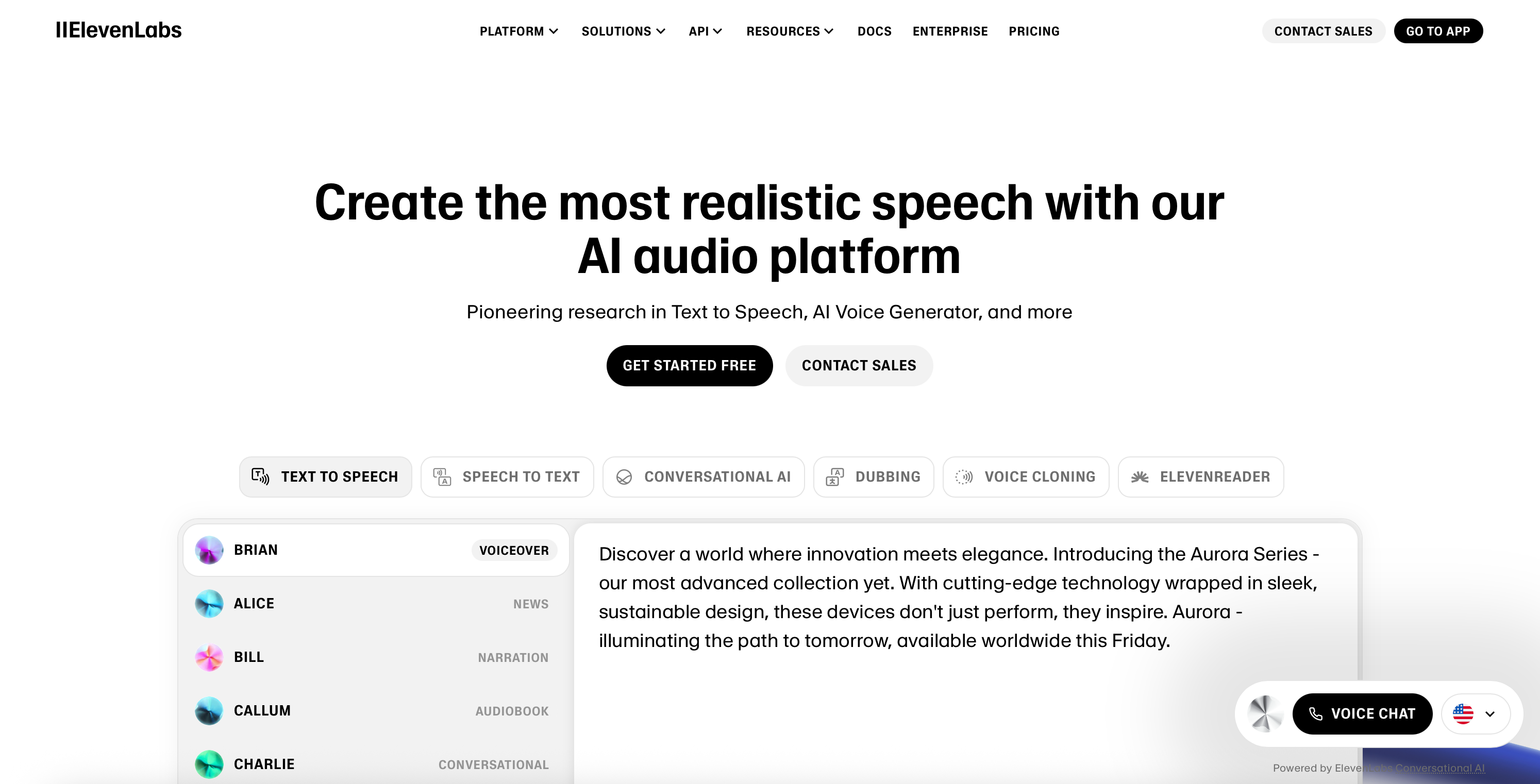
Need a voiceover but don’t have the time – or confidence – to record one yourself? ElevenLabs makes it easy to turn any piece of text into high-quality, realistic speech. You can choose from a range of voices, languages, and tones to match your brand.
Whether you’re creating videos, tutorials, audio content for social media, or even a phone system greeting, this tool gives you professional results in minutes – without needing a microphone or a studio.
Use case: Turn your blog posts into short narrated clips, create quick explainer videos, or add voice to onboarding guides without outsourcing.
2. NotebookLM: Transform your documents into engaging audio content
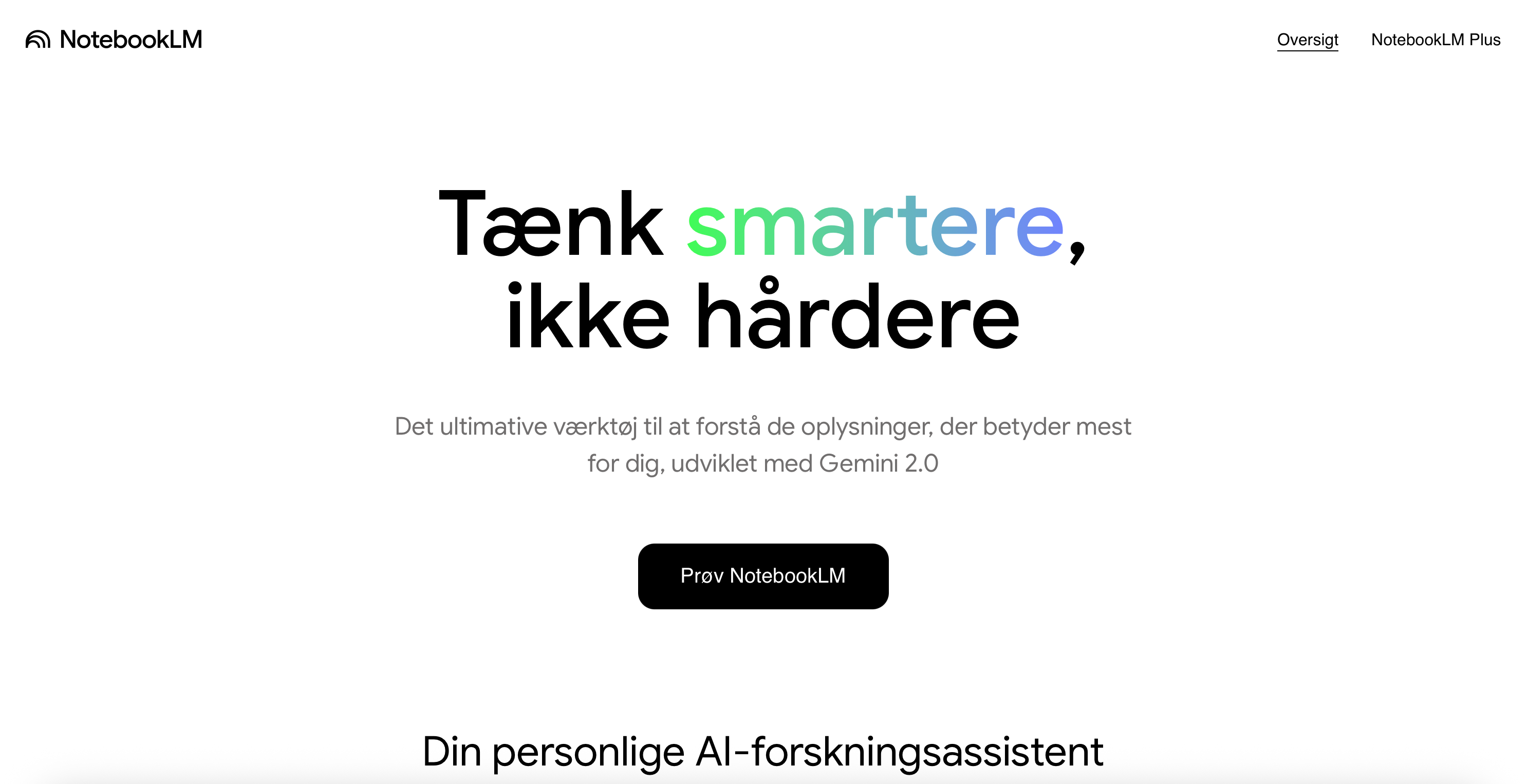
NotebookLM, developed by Google, is more than just a smart assistant for your documents. It not only helps you summarize and query your notes but also enables you to generate podcast-style audio overviews of your content.
By uploading your documents – be it PDFs, reports, meeting notes, or other materials – NotebookLM can create an “Audio Overview,” where two AI-generated hosts discuss and summarize your content in a conversational format. This feature is particularly useful for repurposing existing materials into engaging audio content, making it easier to share information with your audience or team.
Use case: Convert your blog posts, research papers, or internal reports into podcast episodes to reach a broader audience or to facilitate easier consumption of information within your organization.
3. UiZard: Design faster, even without design skills
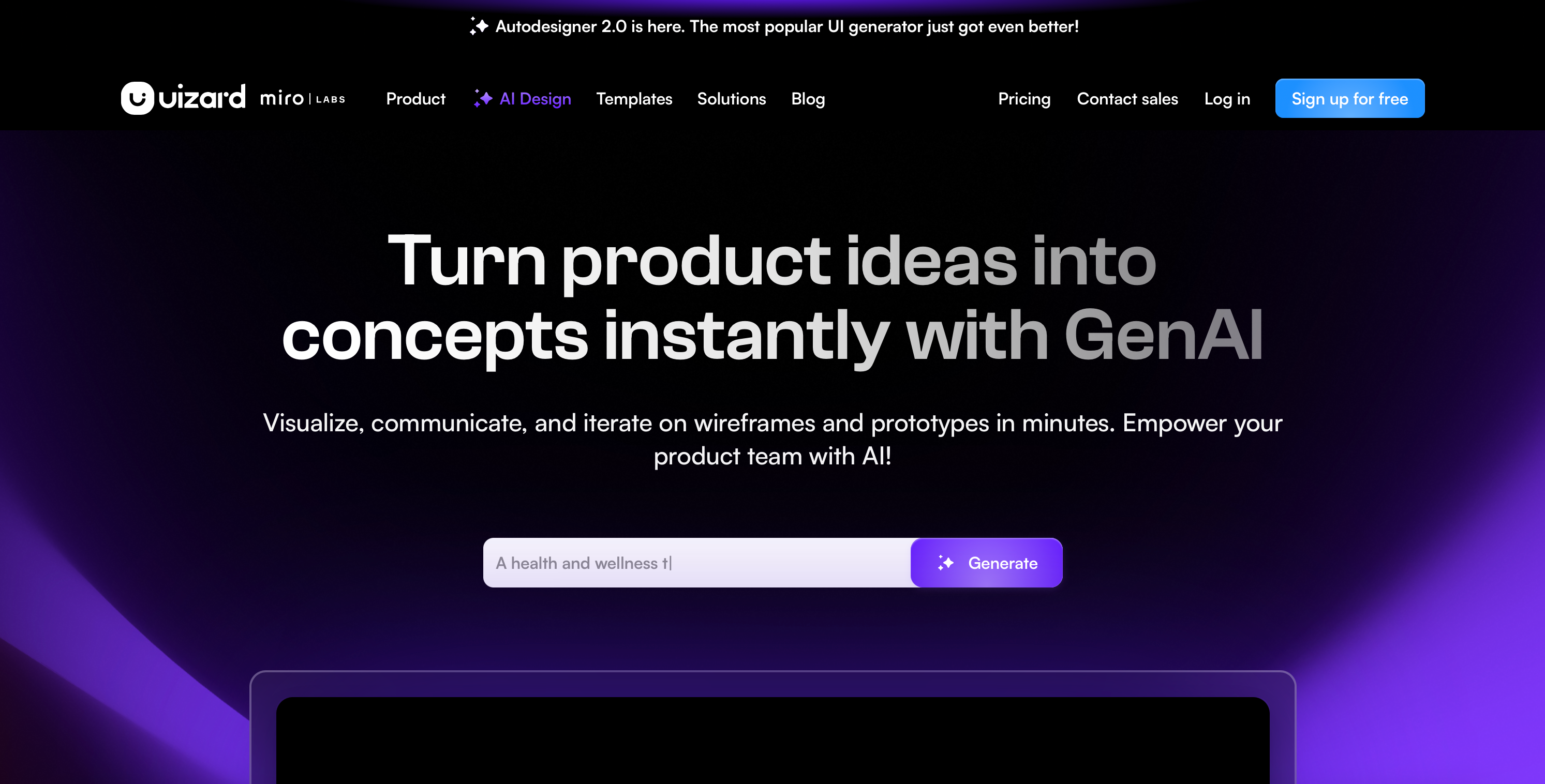
Creating web pages, app mockups, or marketing visuals doesn’t have to be time-consuming – or require a graphic designer. UiZard lets you generate layouts and designs by simply describing what you need.
Want a landing page with a call-to-action, testimonials, and a product photo? Type it in, and UiZard generates a starting point you can tweak with drag-and-drop tools.
Use case: Test new landing page ideas, create pitch decks, or mock up a product interface – even if you’ve never used a design tool before.
4. Adcreative.ai: Smarter ads with less effort
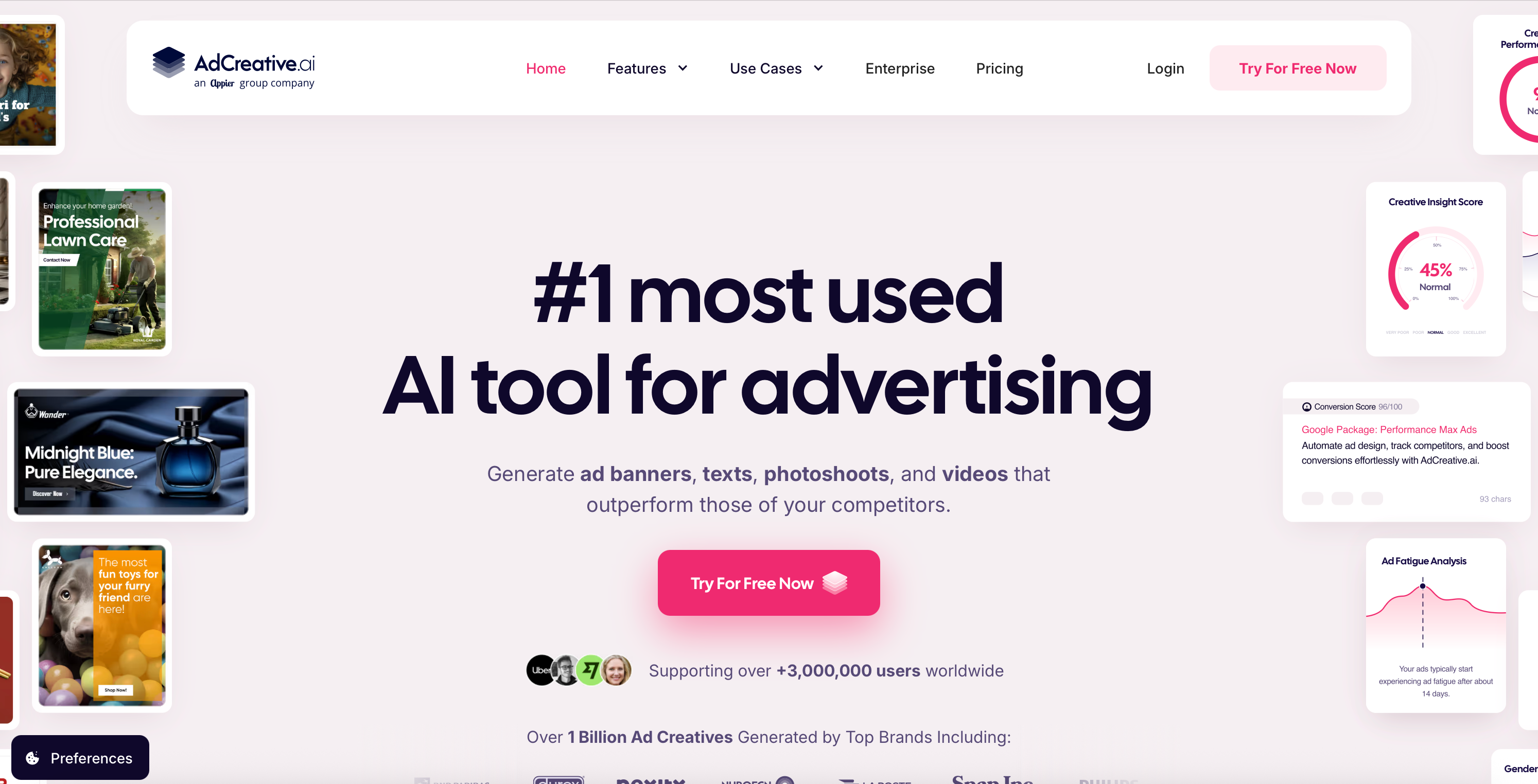
Running paid ads can be expensive and time-consuming – especially if you’re unsure what creative will perform best. Adcreative.ai helps by generating ad visuals and copy tailored to your brand and target audience.
The tool also learns from what has worked in the past, so you can continuously improve your results without having to start from scratch every time.
Use case: Create multiple ad variations for A/B testing in minutes, refresh your creatives more often, and improve performance without hiring a designer or copywriter.
5. Zapier: Automate the tasks you do every day
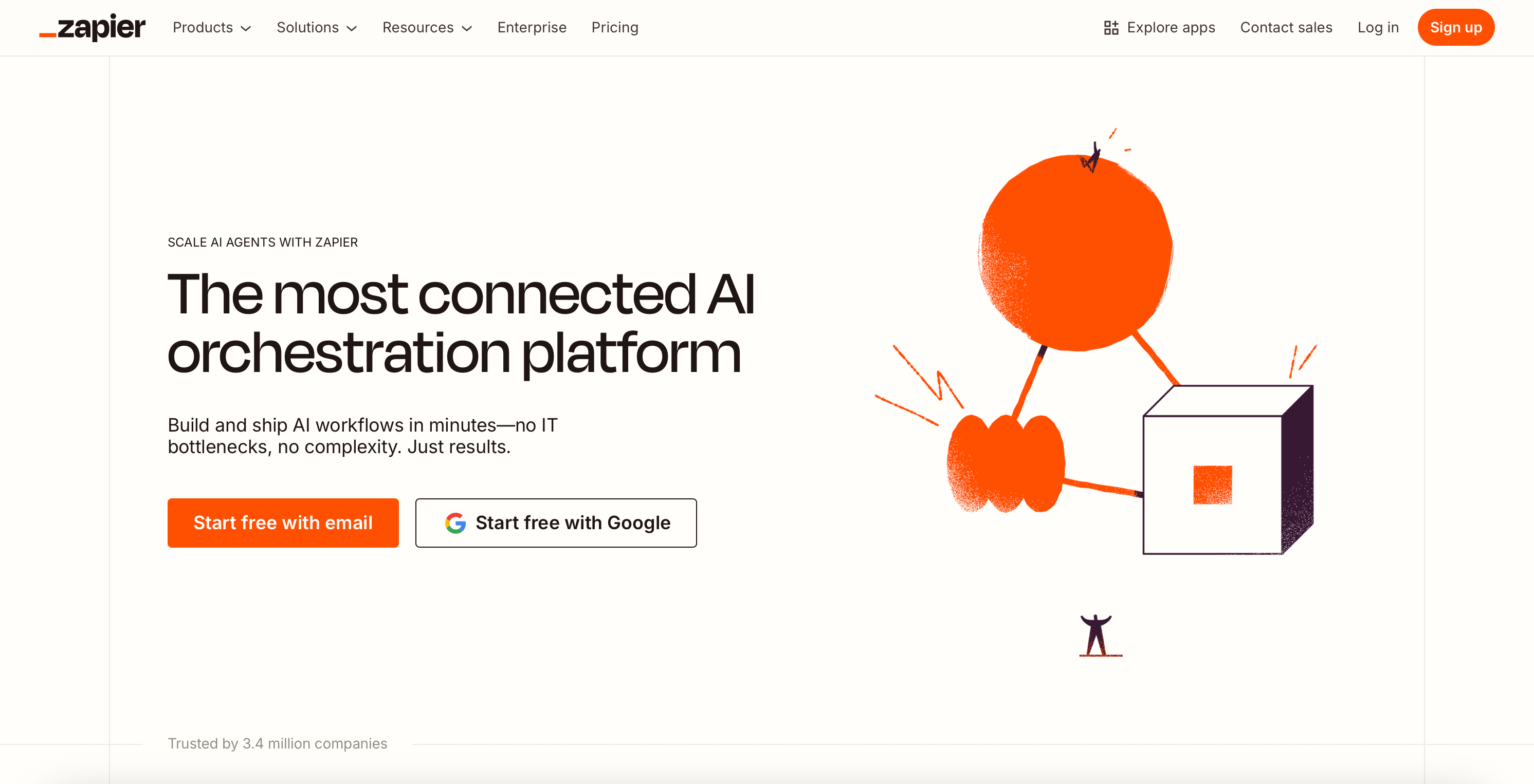
Zapier connects the apps you already use – like Gmail, Slack, your website, spreadsheets, and more – and lets them work together automatically. You can set up simple workflows (called “Zaps”) that save you from doing repetitive tasks manually.
For example, a new form submission on your website can automatically trigger an email response, add the contact to your CRM, and notify your team in Slack – all without you lifting a finger.
Use case: Automate lead handling, customer onboarding, reporting, or reminders – and free up hours of admin time each week.
Small steps, big impact
Getting started with AI doesn’t mean overhauling your entire business. Sometimes, it’s as simple as finding one tool that takes a time-consuming task off your plate – and builds momentum from there.
At Aimie, we believe small businesses should have access to the same smart solutions as big ones – but without the complexity. The tools above are a great place to begin.
Want more inspiration? Browse our AI Tool Directory. Let’s make AI work for your business – one tool at a time.
 Aimie
Aimie